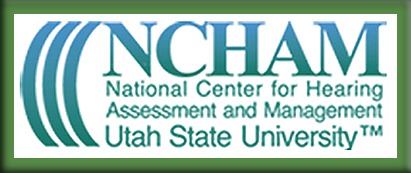ECHO Initiative Events
* * * * * * * * * *
NCHAM Coffee Break Webinars this month:
Four Sessions
:
Oct. 29th, Nov. 1st,
5th, and 8th, 2018
2p.m. EDT
Link to Previous
Recorded Webinars:
If you've missed any of
our previous webinars,
click here to access our library of previously
recorded webinars.
|
|
|
|
I
f your program is new to OAE screening, or if you have added new staff who need instruction on OAE screening practices,
where staff can view instructional video modules
and access the
corresponding resources.
|
|
Quick Links
|
|  Find more helpful hints from previous issues of Probes and Tips and many other
resources at: www.kidshearing.org |
|
|
 |
|
Quality Improvement: A Look Backward Can Help You Move Forward
Taking a few minutes to look at hearing screening data collected over the past year can be one of the most effective ways to improve future hearing screening efforts. The expected
outcomes will differ when screening children 0-3 and 3-5 years age, and when using the Otoacoustic Emissions (OAE) or the Pure Tone screening method, so we'll talk about each of these separately.
Initial screening pass rate
First, for each age group you serve, calculate an initial screening pass rate since the beginning of your program year. To do this, simply take the number of children who passed
the first screening on both ears and divide it by the total number of children who received a screening. For example, if 50 children (ages 0-3) in a program received an initial OAE1 screening, and 40 passed on both ears, 40 divided by 50 is .80 (80%).
Based on data collected from a large number of programs conducting OAE screening with children 0-3 years of age, we see that approximately 75% of children typically pass the OAE1 screening. The pass rate will vary, based on screener skill level and the time of year. In winter, the pass rate may be somewhat lower, because children are experiencing temporary symptoms that may interfere with screening, such as head colds. Conversely, if children are generally healthy and cooperative, and screeners have excellent skills, you might have a higher pass rate.
If your OAE pass rate for children 0-3 years of age drops below 70%, however, you'll w
ant to make sure that your equipment is functioning properly, and that your screeners are well-trained. Ask for assistance from your audiologist partner and use the Screening Skills Checklist to assess screener proficiency. You can also review the Monitoring for Program Quality sheet for more tips on how to keep your OAE pass rate and screening quality high.
If you are conducting OAE screening with children 3 - 5 years of age, you should expect a pass rate well above 75%. Children in this age range are generally more cooperative, easier to screen, and tend to have fewer temporary middle ear conditions that interfere with the screening. Likewise,
if you are conducting Pure Tone screening with children in this age range, you may expect a 90% initial pass rate.
Follow-up after initial screening
Keep in mind that the point of screening is to identify children who may be at risk for permanent hearing loss and to provide them with needed services. The quality of your screening program is therefore reflected not only in the number of children who receive an initial
screening, but also in the number who receive follow-up after the initial screening.

Take a careful look a
t the individual outcomes for children who didn't pass the initial screening. In the example described above, 10 of 50 childr
en
(20%) did not pass the OAE1. A program manager would want to have clear document
ation showing that all 10 children either passed a follow-up OAE screening, or that a pediatric audiologist completed a more comprehensive evaluation.
The same holds true for children 3-5 years of age being screened with either the OAE or Pure Tone method. Any child that did not pass the initial screening should have results on file indicating that the child passed a subsequent screening,
or was seen by an audiologist.
Referral to a health care provider may be a necessary step on the protocol path, but it is not a screening outcome. Some children may move away, or for other reasons drop out of the service system, but undertaking follow-up in a timely way will help to reduce the number who have incomplete screening results.
If there are any children in your program who don't
have a passing result for both ears (or audiological evaluation results), this is an area of concern. These children are at risk for having an unidentified hearing loss. Redouble your efforts to complete the process for every child.
On an annual basis, or more frequently, check to see what your hearing screening pass rate is, and also how many children not passing the initial screening have received the needed rescreening and/or audiological evaluation. Let your Health Services Advisory Committee and others know about the quality indicators you are monitoring to ensure that you are providing children with the best care.
|
 |
Have any questions about how to use hearing screening data to inform future screening efforts?
Let us know at:
And, as always, share
www.KidsHearing.org
with anyone you think would benefit from our resources.
|
|

2615 Old Main Hill
Logan, UT 84322
|
|
|